Biology > QUESTIONS & ANSWERS > Edapt Physiology of Muscle Contraction Anatomy and Physiology III with Lab-Holsey > Unit 2 | 17 Q&A (All)
Edapt Physiology of Muscle Contraction Anatomy and Physiology III with Lab-Holsey > Unit 2 | 17 Q&A
Document Content and Description Below
BIOS 255 Edapt Physiology of Muscle Contraction Anatomy and Physiology III with Lab-Holsey > Unit 2 close 1. What term is given to the event whereby another action potential cannot be propaga... ted shortly after an action potential? a. Tetanic period b. Plateau period c. Spasmodic period d. Refractory period e. Reflective period 2. What term is given to the event whereby the voltage of an action potential begins to return to its resting potential from the height of its peak? a. Hyperpolarization b. Repolarization c. Depolarization d. Plateau e. Hypopolarization 3. Which of the following elements is required to sustain a muscular contraction? a. Sodium b. Calcium c. Potassium d. ATP e. All of the above 4. Complete the sentence with the proper description of the action potential. a. Cardiac contractile action potentials will have a rapid depolarization that is maintained via the presence of calcium. b. Cardiac autorhythmic action potentials will have both a rapid depolarization and repolarization with not refractory period 5. Which of the following aspects of the conduction system would directly result in contraction of the myocardium in the ventricular walls.? a. AV node b. SA node c. AV bundle d. Purkinje fibers e. Left and right bundle branches 6. Select all that apply. What are the individual ion contributions to the resting membrane potential of the cardiac pacemaker cells? a. Greater concentration of sodium outside the cell b. No sodium/potassium pump c. Greater concentration of potassium inside the cell d. Calcium gradient with more calcium outside the cell e. Greater concentration of chloride outside the cell. 7. A distinct, extended plateau occurs in the action potential in cardiac muscle cells, producing a refractory period of ______ milliseconds. a. 1-2 b. 100 c. 10 d. 20-50 e. 250 8. Without a plateau extending the refractory period in cardiac muscle, sarcomeres, might be stimulated so quickly that they would not relax, leading to a sustained contraction known as what? a. Depolarization b. Tetany c. Relaxation d. Paralysis e. Repolarization 9. During the depolarization phase of cardiac muscle ______________. a. ligand-gated calcium channels open b. ligand-gated potassium channels open c. voltage-gated sodium channels open d. voltage-gated calcium channels open e. ligand-gated sodium channels open f. voltage-gated potassium channels open 10. The ____________ phase of the action potential in cardiac muscle delays repolarization to the resting membrane potential in order to lengthen refractory period. a. repolarization b. hypopolarization c. depolarization d. hyperpolarization e. plateau 11. In the sliding filament theory, the protein filaments shorten to create a muscle contraction. a. True b. False 12. The neurotransmitter used at the neuromuscular junction is acetylcholine (ACh). a. True b. False 13. The first step in the relaxation sequence is __________? a. Removal of sodium from the sarcolemma b. Removal of calcium from the cystol c. Preventing the release of ACh (acetylcholine) into the synaptic cleft d. Hydrolysis of ATP from the myosin 14. The connection formed between the actin and myosin is known as what? a. An action potential b. A cross-bridge c. A contraction d. A regulatory protein 15. ___ACHe_____helps to breakdown the neurotransmitter ACh and aide in its removal from the synapse. 16. What is the name of the cellular structure that when stimulated, releases calcium into the cystol of the muscle cell? a. Mitochondria b. Sacromere c. Sarcolemma d. Sarcoplasmic reticulum 17. ACh will attach to Ligand-gated on the sarcolemma. [Show More]
Last updated: 8 months ago
Preview 1 out of 4 pages

Buy this document to get the full access instantly
Instant Download Access after purchase
Buy NowInstant download
We Accept:

Reviews( 0 )
$6.00
Can't find what you want? Try our AI powered Search
Document information
Connected school, study & course
About the document
Uploaded On
Nov 07, 2022
Number of pages
4
Written in
Additional information
This document has been written for:
Uploaded
Nov 07, 2022
Downloads
0
Views
153

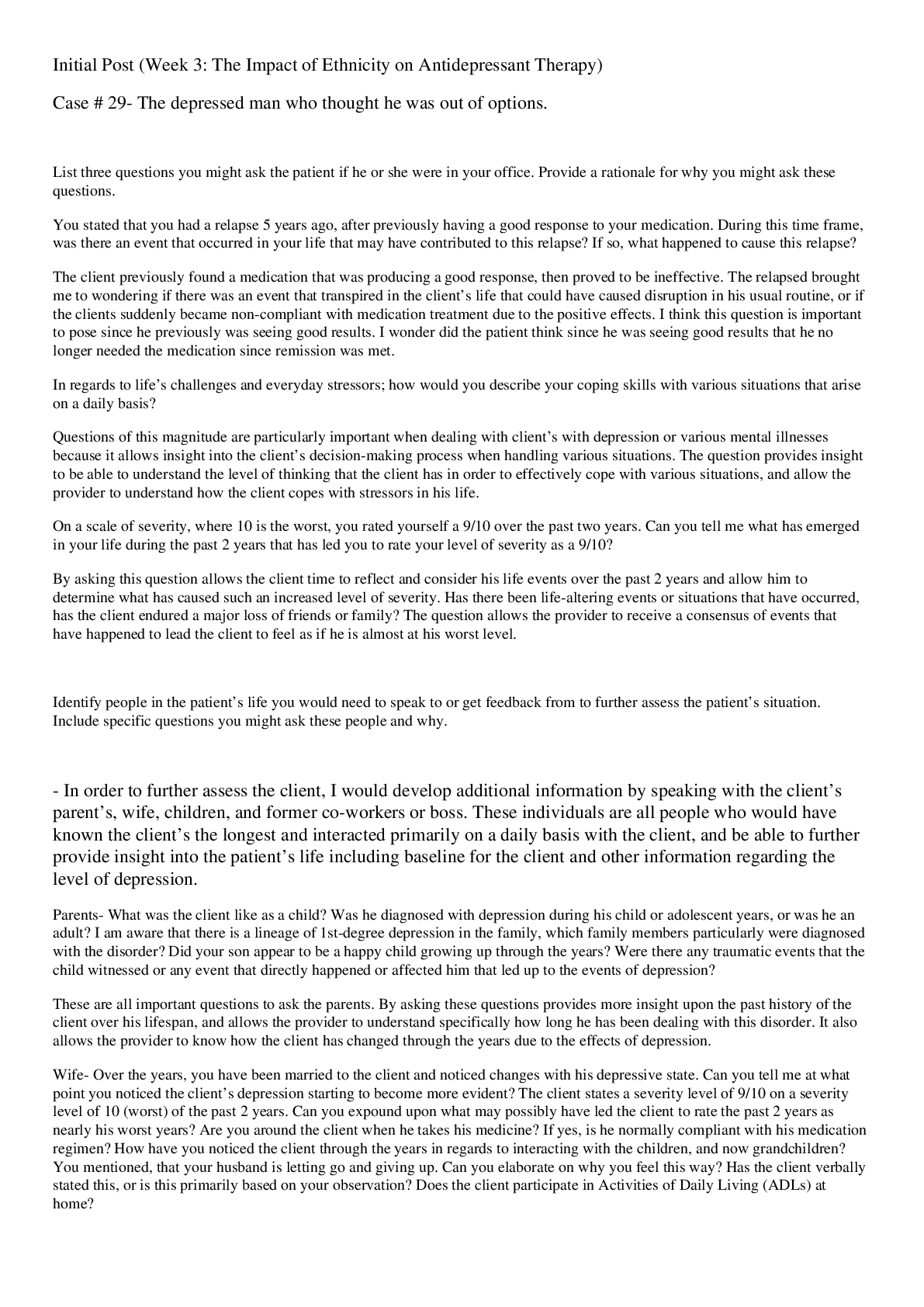
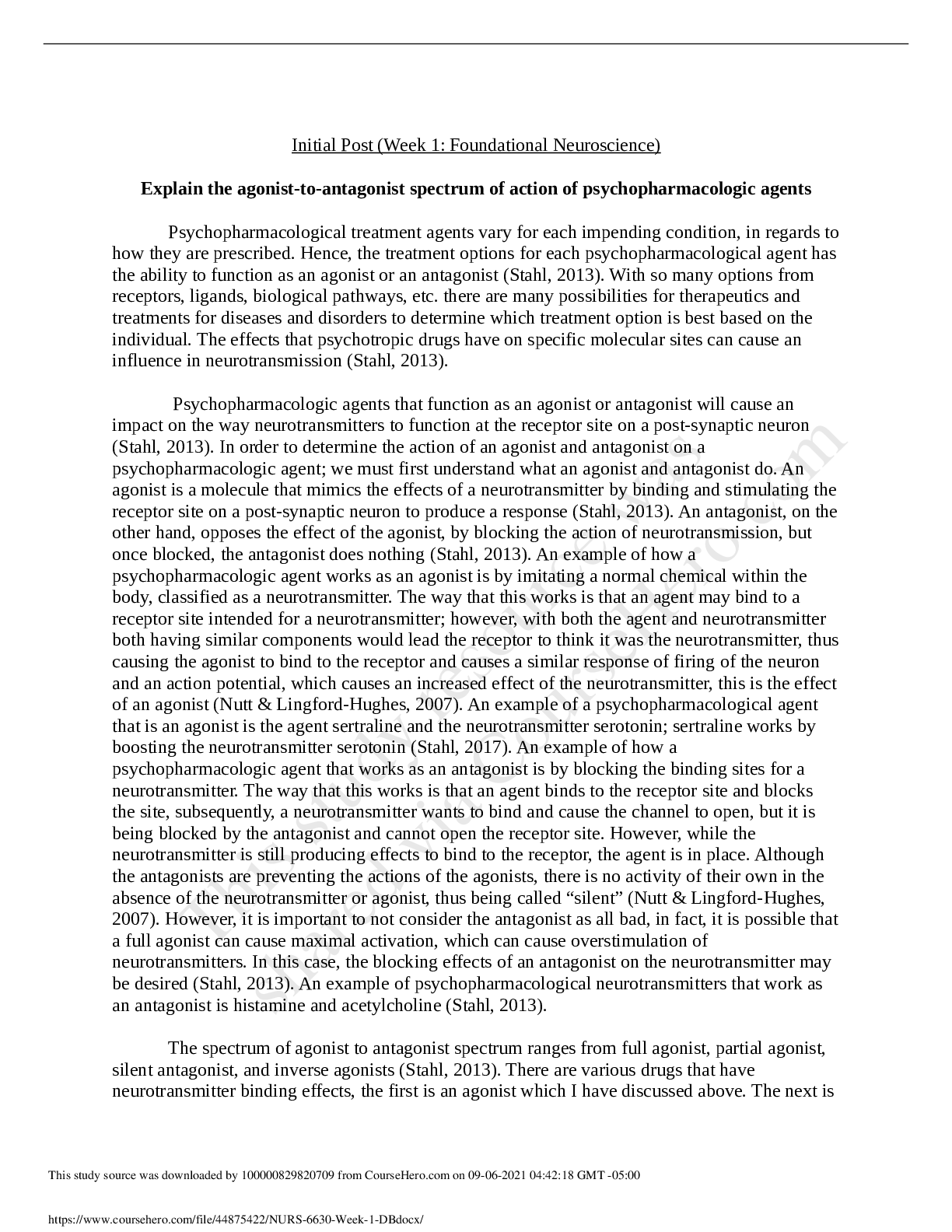
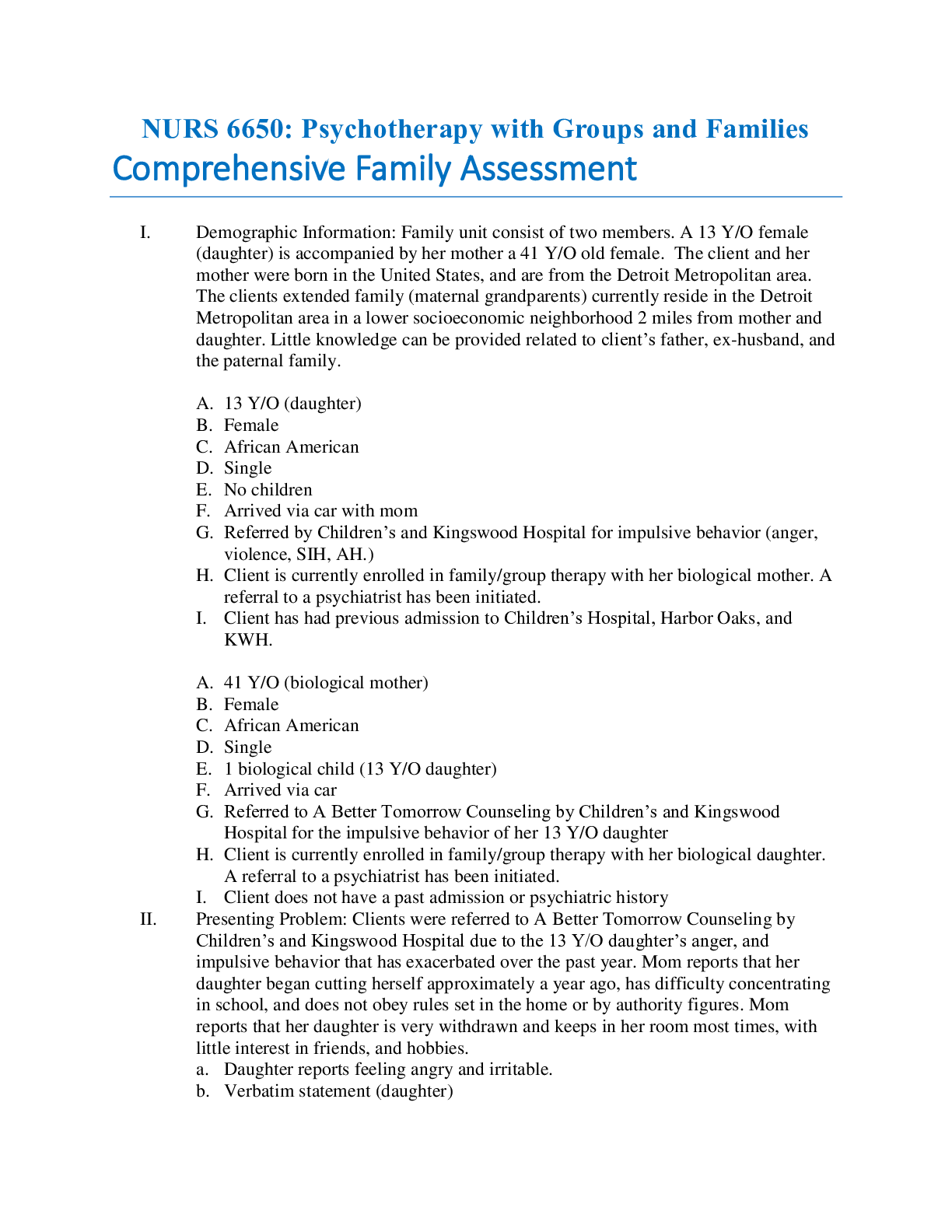
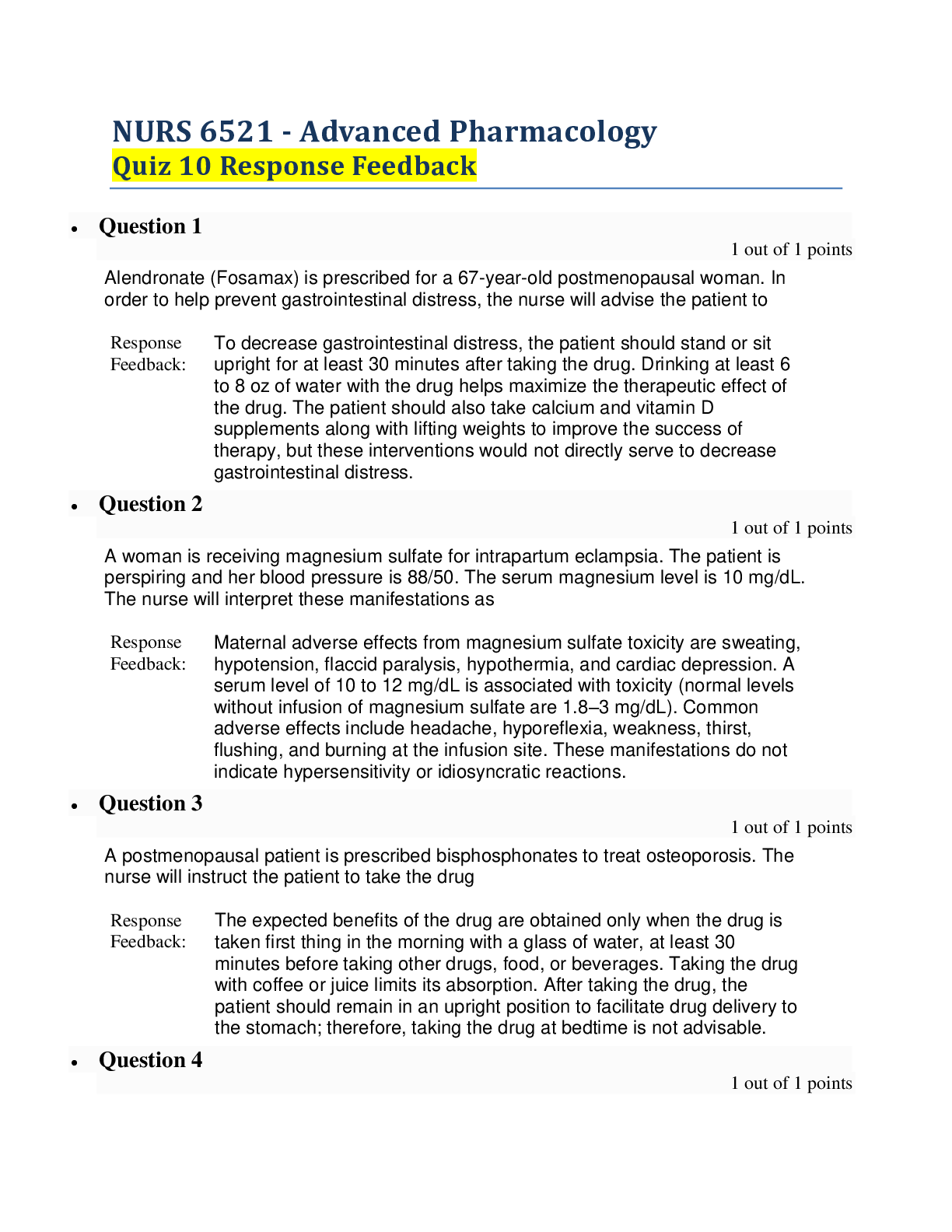
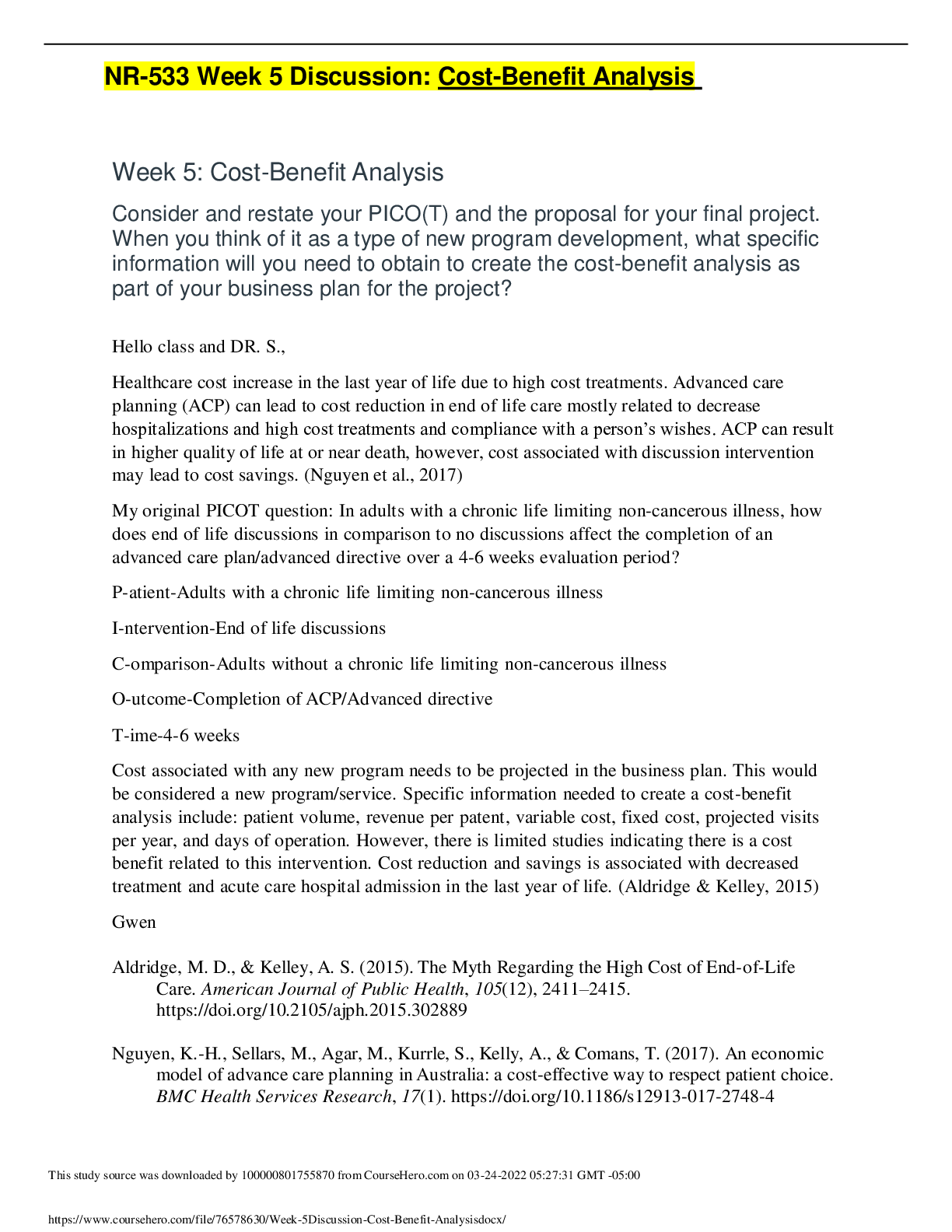
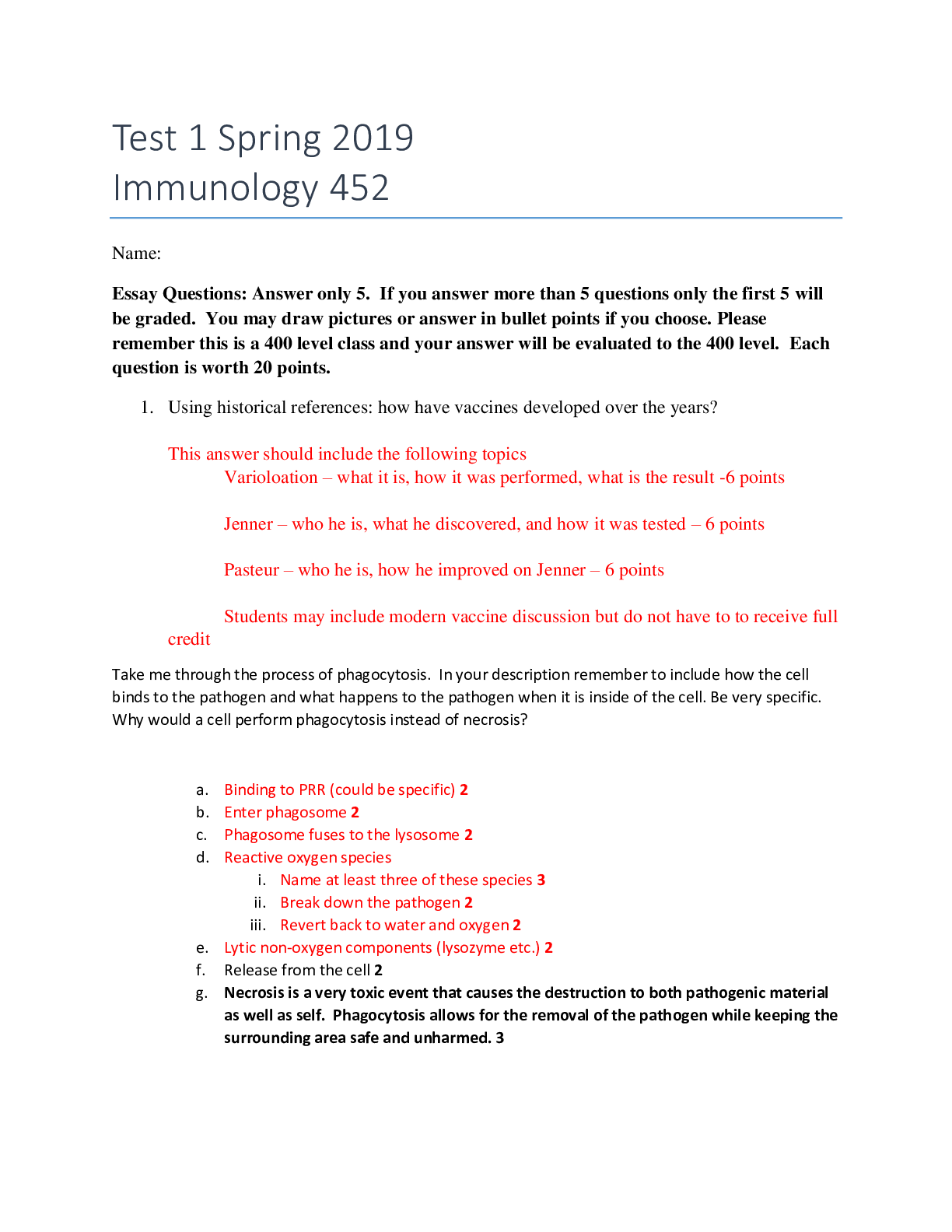


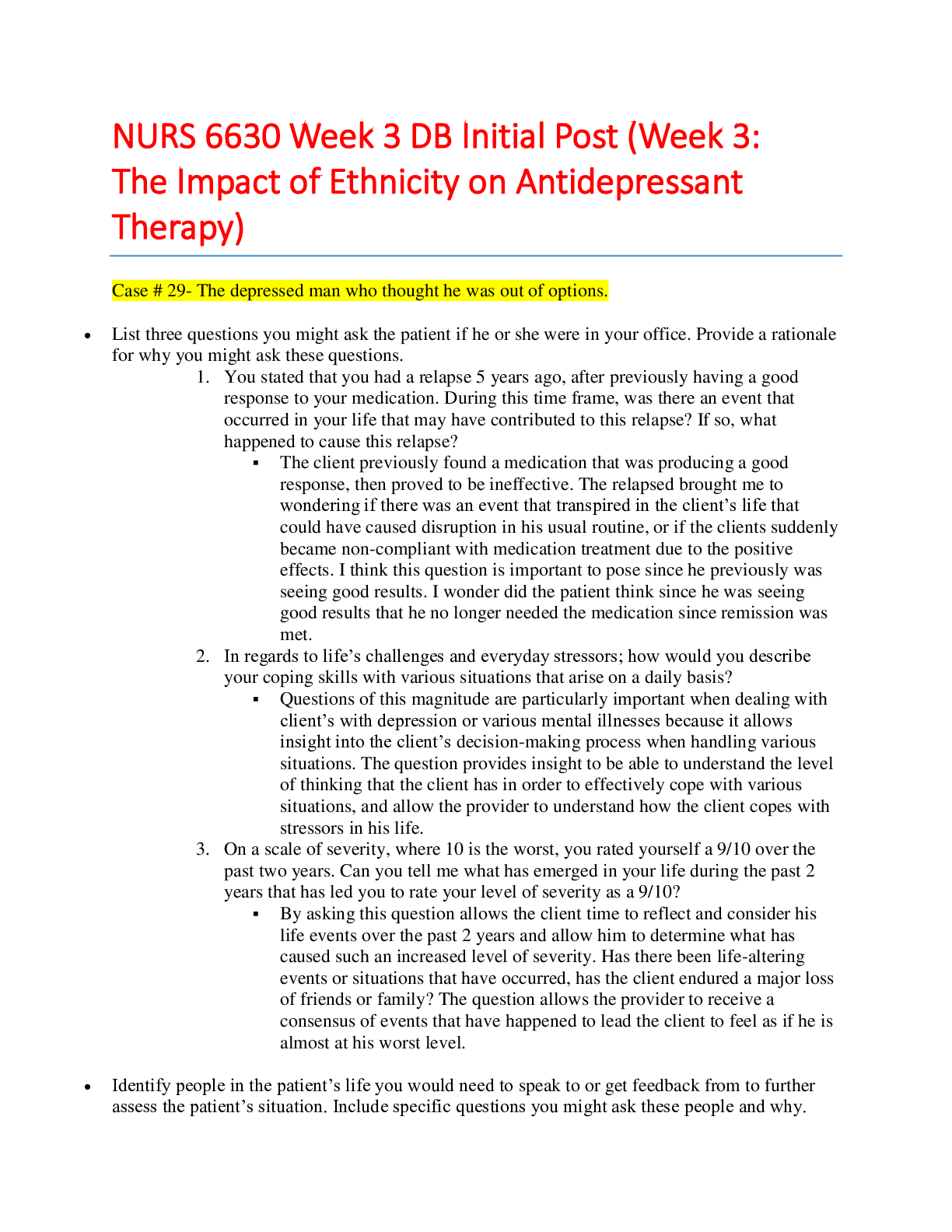
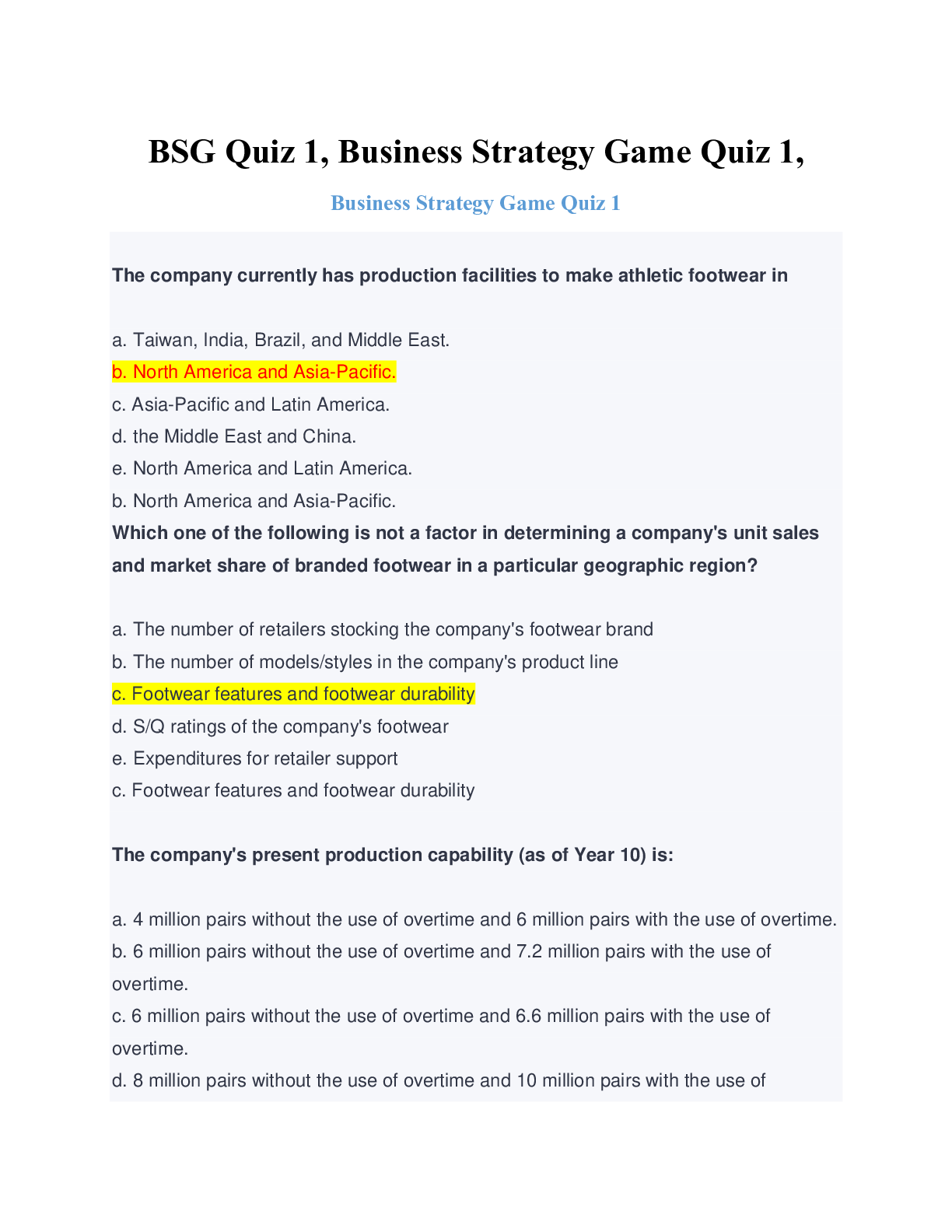

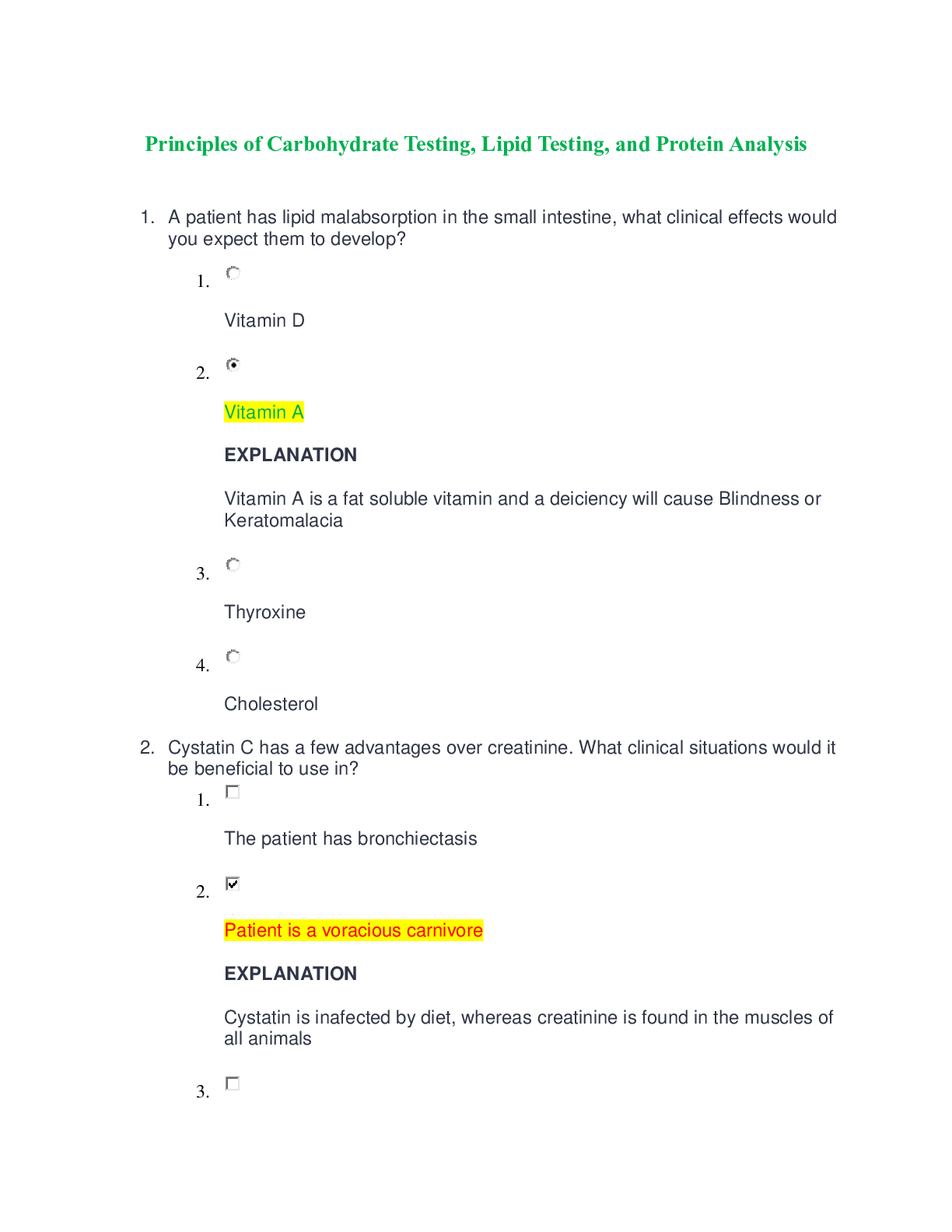
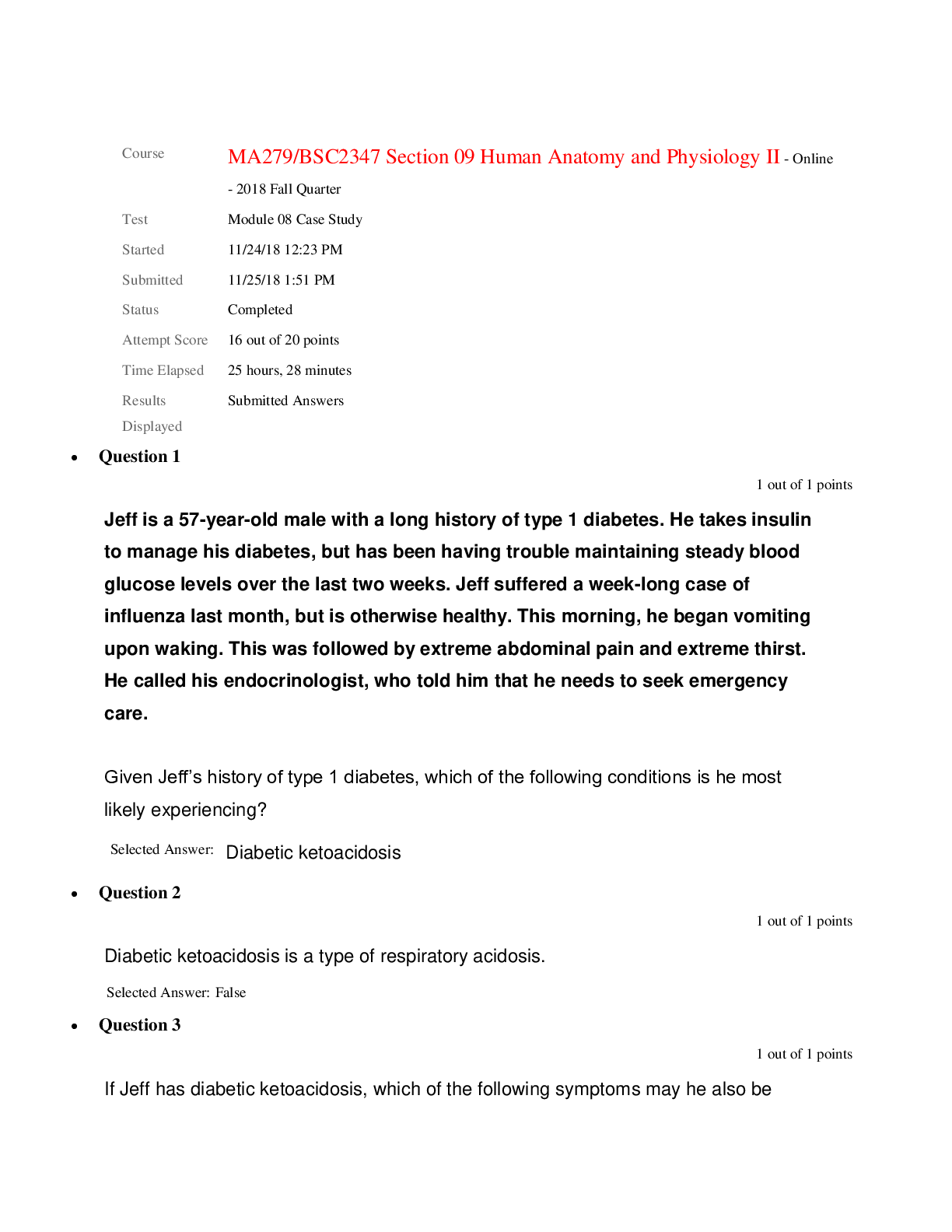

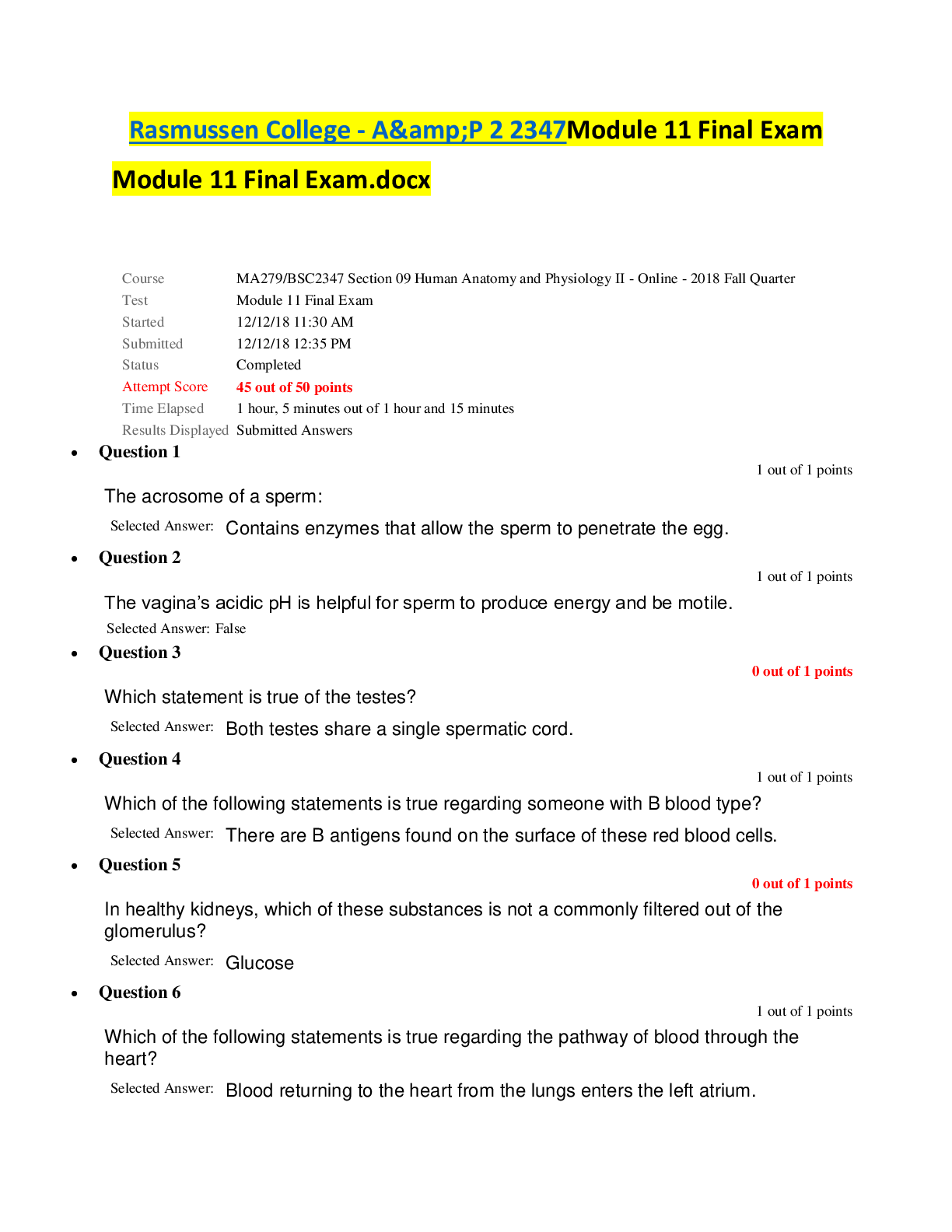






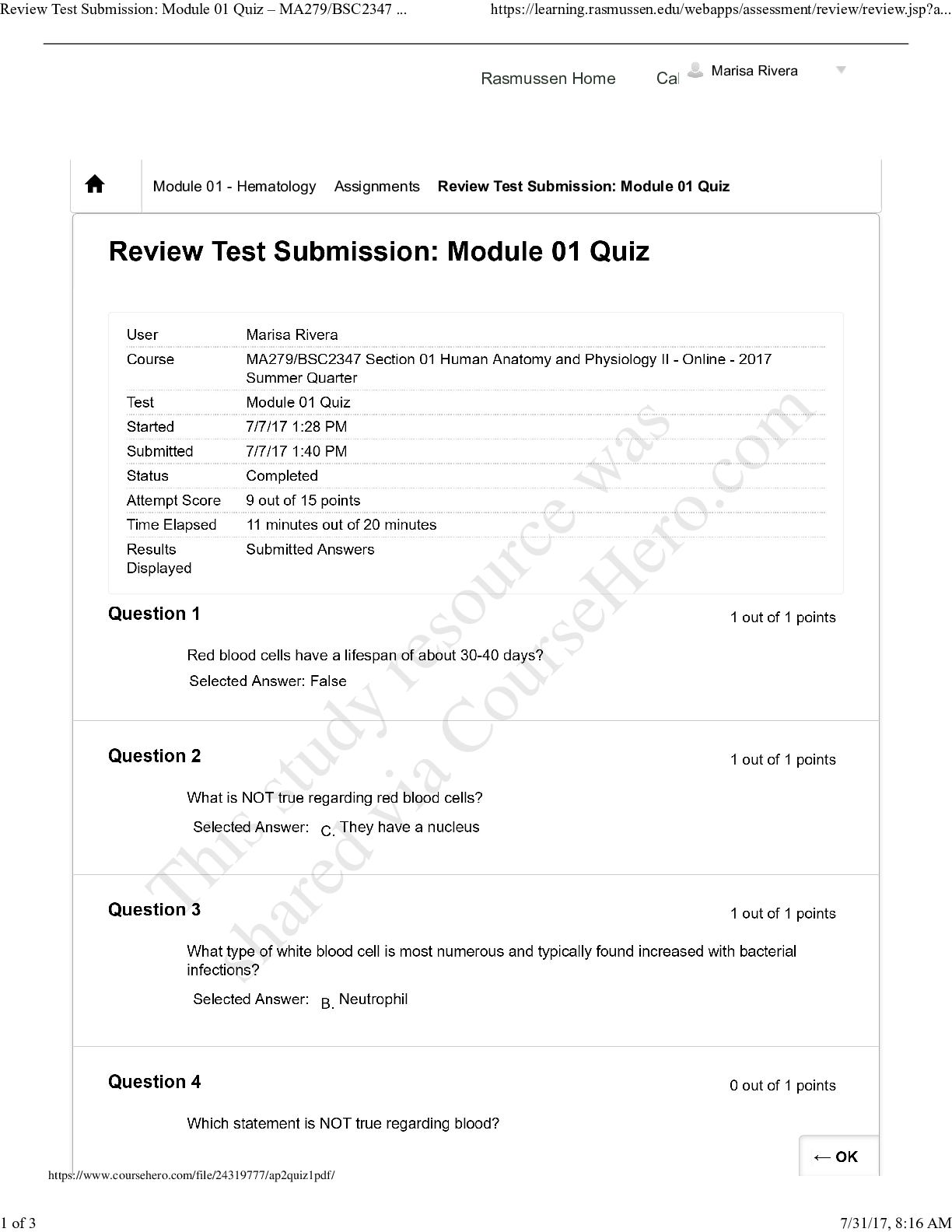

, 100% Correct, Download to Score A.png)

